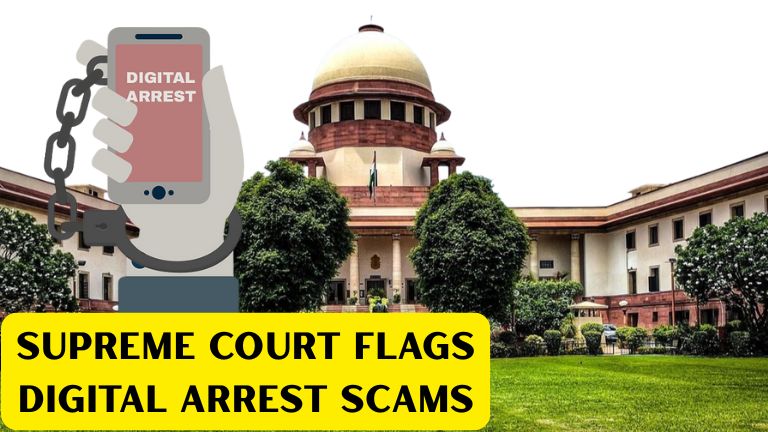V. Ramasubramanian, J.@mdashThis writ appeal arises out of the dismissal of a writ petition filed by the Management of a company challenging an
order of the Appellate Authority under the Payment of Gratuity Act.
2. We have heard Mr. Sanjay Mohan, learned counsel the appellant and Mr.I.Charles, the second respondent appearing in person.
3. The second respondent was engaged by the appellant Management from 10.9.1964. Pursuant to the disciplinary proceedings initiated against
him, he was dismissed from service by an order dated 16.3.1981.
4. The second respondent raised an Industrial Dispute in I.D. No.73 of 1982 on the file of the I Additional Labour Court, Chennai. The Labour
Court dismissed the claim by an award dated 7.11.1984.
5. Challenging the award of the Labour Court, the second respondent filed a writ petition in W.P. No.9342 of 1987 on the file of this Court. The
writ petition was allowed by a learned Judge by an order dated 8.6.1993 directing the reinstatement of the second respondent with back-wages.
6. However, an appeal filed by the Management in W.A. No.711 of 1993 was allowed by the Division Bench, by an order dated 24.7.1997,
setting aside the order of the learned Judge and modifying the award of the Labour Court into one of lump sum compensation in a sum of
Rs.75,000/-. This order attained finality and the Management also paid the amount.
7. However, pursuant to the order of the Division Bench, the second respondent became entitled to gratuity. Therefore, when the second
respondent made a claim, the appellant calculated gratuity for the period of his service from 1964 to 1981 and paid a sum of Rs.7,084/-.
Challenging the calculation so made, the second respondent filed a petition in P.G. No.29 of 2005 before the Controlling Authority under the
Payment of Gratuity Act. The claim made by the second respondent was that he was entitled to seek gratuity from the date of appointment namely
10.9.1964 up to the date of his normal age of superannuation namely 22.8.1999.
8. However, the Controlling Authority rejected the claim holding that the second respondent was not entitled to gratuity beyond the period of the
date of dismissal namely 16.3.1981. However, the second respondent filed a statutory appeal before the Appellate Authority under the Payment of
Gratuity Act. The appeal in P.G. No.28 of 2006 was allowed by the Appellate Authority by an order dated 22.3.2007 directing the Management
to pay gratuity in a sum of Rs.84,808/- by taking the normal date of superannuation as the cut off date.
9. Challenging the said order of the Appellate Authority, the Management filed a writ petition in W.P. No.19781 of 2007. The writ petition was
dismissed by a learned Judge by an order dated 8.10.2010. Aggrieved by the said order, the Management is on appeal before us.
10. The only question that arises for consideration before us is as to whether a person in whose favour an award of payment of lump sum
compensation is made in lieu of reinstatement, is entitled to claim gratuity up to the period of his normal superannuation or upto the date of
termination of employment.
11. The right of a workman to receive gratuity is derived from Section 4(1) of the Payment of Gratuity Act, 1972. The quantum of gratuity payable
to a workman is indicated by Section 4(2) which stipulates that the employee is entitled to gratuity for every completed year of service or part
thereof in excess of six months.
12. The expression ""completed year of service"" is defined in Section 2(b) of the Act to mean continuous service for one year. The expression
continuous service"" is defined in Section 2A as follows:-
[2A. Continuous Service.- (1) For the purpose of this Act-
(1) An employee shall be said to be in continuous service for a period if he has, for that period, been in uninterrupted service, including service
which may be interrupted on account of sickness, accident, leave, absence from duty without leave (not being absence in respect of which an order
treating the absence as break in service has been passed in accordance with the standing orders, rules or regulations governing the employees of
the establishment), lay-off, strike or a lock-out or cessation of work not due to any fault of the employee, whether such uninterrupted or
interrupted service was rendered before or after the commencement of this Act;
(2) Where an employee (not being an employee employed in a seasonal establishment) is not in continuous service within the meaning of clause (1),
for any period of one year or six months, he shall be deemed to be in continuous service under the employer-
(a) for the said period of one year, if the employee during the period of twelve calendar months preceding the date with reference to which
calculation is to be made, has actually worked under the employer for not less than-
(i) one hundred and ninety days, in the case of an employee employed below the ground in a mine or in an establishment which works for less than
six days in a week; and
(ii) two hundred and forty days, in any other case:
(b) for the said period of six months if the employee during the period of six calendar months preceding the date with reference to which the
calculation is to be made, has actually worked under the employer for not less than-
(i) ninety-five days, in the case of an employee employed below the ground in a mine or in an establishment which works for less than six days in a
week; and
(ii) one hundred and twenty days, in any other case;
Explanation.- For the purpose of clause (2), the number of days on which an employee has actually worked under an employer shall include the
days on which-
(i) he has been laid-off under an agreement or as permitted by standing orders made under the Industrial Employment (Standing Orders) Act,
1946 (20 of 1946), or under the Industrial Disputes Act, 1947 (14 of 1947), or under any other law applicable to the establishment;
(ii) he has been on leave with full wages, earned in the previous year;
(iii) he has been absent due to temporary disablement caused by accident arising out of and in the course of his employment; and
(iv) in the case of a female, she has been on maternity leave; so, however, that the total period of such maternity leave does not exceed twelve
weeks].
(3) Where an employee, employed in a seasonal establishment, is not in continuous service within the meaning of clause (1), for any period of one
year or six months, he shall be deemed to be in continuous service under the employer for such period if he has actually worked for not less than
seventy-five per cent of the number of days on which the establishment was in operation during such period.]
13. Therefore, it is clear that gratuity is payable for every completed year of service, with reference to the expression ""continuous service"". Even if
service is interrupted, on account of sickness, accident, leave or absence from duty, the period of such interruption is taken to be part of
continuous service, if the parameters indicated therein are satisfied. However, any absence from duty in respect of which an order treating it as
break in service is passed lawfully, is not included within the definition of the expression ""continuous service"". But, a period of layout, strike or
lockout or cessation of work not due to any fault of the employee is also included within the period of ""continuous service"".
14. In the case on hand there has been a cessation of work due to the fault of the employee that lead to disciplinary proceedings eventually
culminating in a penalty of dismissal from service. Though the order of dismissal was upheld by the Labour Court, the same was set aside by a
single Judge with a direction for reinstatement with back-wages. However, the order of the learned Judge was modified into one of lump sum
compensation in lieu of reinstatement.
15. Once compensation is awarded in lieu of reinstatement, the same would tantamount to a cessation of employment. The relationship of Master
and Servant terminates, on the date of dismissal. Just as an award of reinstatement normally relates back to the date of dismissal (whether with or
without backwages), an award for compensation in lieu of reinstatement would also relate back to the date of dismissal. Even in cases where the
order of dismissal is set aside, the relationship of master and servant does not continue if compensation alone is awarded in lieu of reinstatement.
Therefore, the order for payment of compensation in lieu of reinstatement should be taken to have had the effect of severance of the relationship of
Master and Servant as on the date of the order of dismissal. Once this is accepted, the question of counting the period up to the date of age of
superannuation as qualifying service for payment of gratuity would not arise.
16. But, the learned Judge proceeded on the basis that the Management paid salary to the second respondent during the pendency of the writ
appeal questioning the correctness of the order for reinstatement with back-wages passed by the learned single Judge in a writ petition. While
allowing the writ appeal in lieu of reinstatement, the Division Bench took note of the payment of wages of Rs.4,200/- per month, during the period
of pendency of writ appeal. The learned Judge also took note of the fact that the second respondent was left with only 26 months of service, when
the Division Bench gave its decision. Therefore, the learned Judge concluded that inasmuch as the Division Bench took note of the salary that was
drawn at the time of the judgment dated 24.7.1997, the second respondent was entitled to calculate the period up to the date of superannuation
for the purpose of calculation of gratuity.
17. Though on a fundamental principle of law, we are clearly of the view that if an award is only for payment of compensation in lieu of
reinstatement, the same would tantamount to cessation of employment with reference to the date of termination, we cannot totally reject the view
taken by the learned Judge in the facts and circumstances of the case, as impossible of being held. The jurisdiction under Article 226, which the
learned Judge exercised, is very peculiar. It is a discretionary remedy and the Court is entitled even to refuse to grant a relief, despite holding in
favour of the writ petitioner. In the case on hand, the view taken by the Appellate Authority, which is a statutory authority under the Payment of
Gratuity Act, 1971, was under challenge before the learned Judge. Therefore, the learned Judge took note of certain facts and refused to set aside
the order of the Appellate Authority, especially since what the learned Judge was concerned with was a labour welfare legislation. Since the view
taken by the learned Judge on the facts and circumstances of the case cannot be held to be totally erroneous, we would prefer not to interfere with
the said order, despite holding the point of law in favour of the management. Accordingly, the writ appeal is dismissed. No costs. Consequently,
M.P. No.1 of 2011 is also dismissed.

